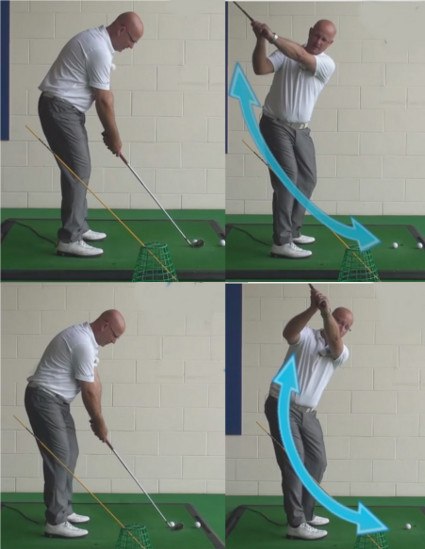
Find out what the 'swing plane' is and how to check whether it is correct or not in your swing with this tip.
A golf swing is a rotational movement where the golfer turns his or her body around the spine meaning that the golf club is sent in a wide arc backwards and forwards through the swing motion. The arc that the club head follows around the body during the swing is called the ‘swing plane’.
A correct swing plane allows the golfer to swing the golf club at high speed but still be in control to strike the golf ball correctly and in the right direction. This is achieved as the club travels backwards and forwards around the body on the same circle or 'plane'. When the club is 'on plane', it travels around the body in a wide arc meaning that the club travels much faster than the golfer can ever move physically. This culminates in a high speed being generated through the ball with very little effort on the golfer's part. Also, when the club swings back and forth in the same circle, the club head travels around the body and on a straight line through the golf ball towards the target, creating the ability to hit a straight shot.
Swing plane is determined by the golfer's posture or spine angle. It will be slightly different for every golfer as characteristics change from person to person such as; long legs; short body; long arms, etc. Posture and swing plane are slightly different for every golfer but can still be checked in the same way, however, make sure of the following two points before checking your plane:
1. Check posture – Make sure that the knees are slightly bent, there is a lean forward from the waist but not the shoulders, and the back is nice and straight.
2. Make sure that the shoulders turn around the spine and power the swing rather than the arms lifting the club upwards during the backswing.
To check your swing plane, set up as normal to a golf ball making sure of the previous two points. Then put a second golf ball two to three feet behind it on the line connecting the ball and the target. At the halfway point in the backswing, stop and check the club and arm position. The arms should be fairly straight with the hands directly opposite the centre of the chest. The wrists should be hinged at 90 degrees. If the club is on plane then the shaft of the club should be pointing downwards somewhere on the line, connecting the two golf balls on the floor (ideally, this would also be the same on the downswing too). If the club points outside the line of the balls (the other side of the line between the balls away from the body), the club is too ‘flat’. If the club points inside the line of the balls (in-between the body and the balls), it is too ‘steep’. Both of which stop the club from attacking the ball on the correct line and at maximum speed.
Use this mid-swing drill to check your swing plane and hit straighter, further shots.






